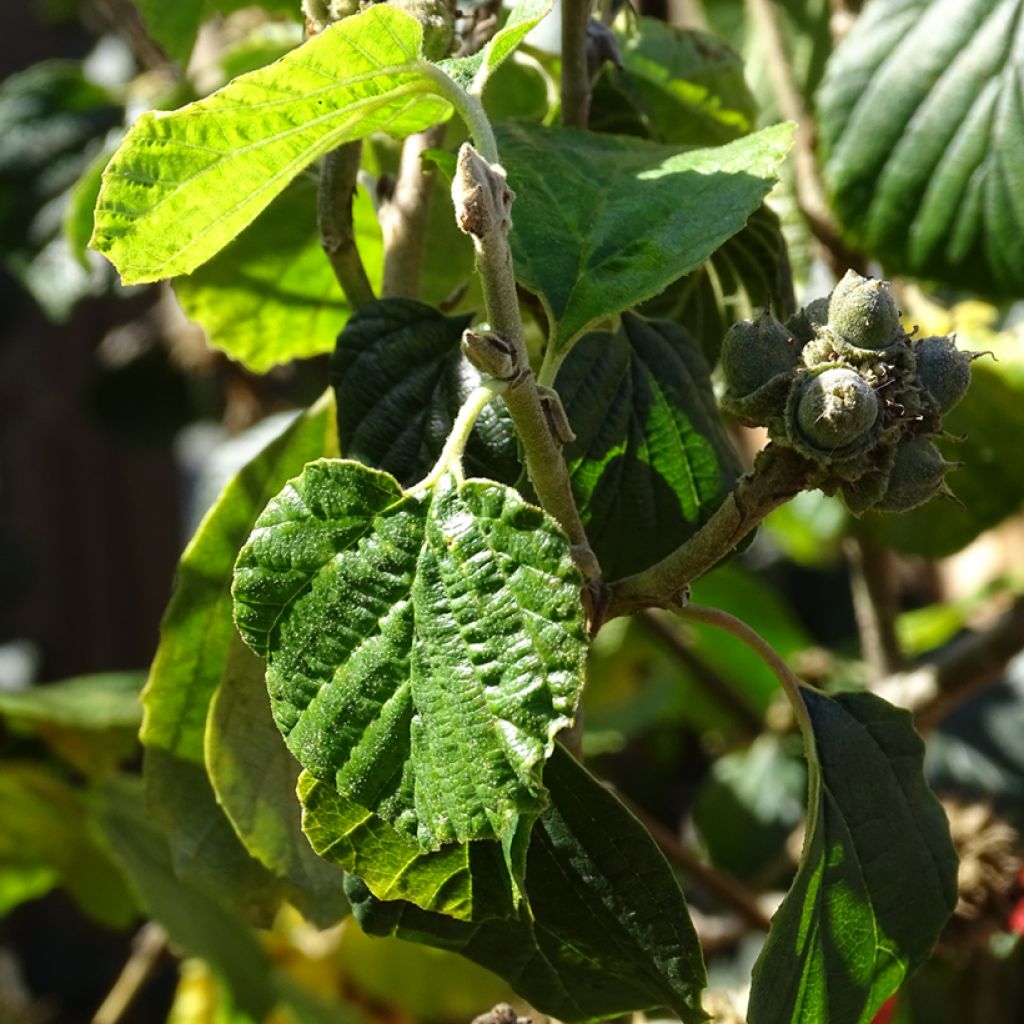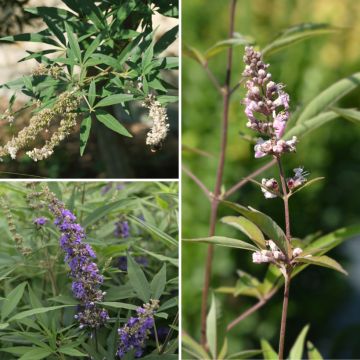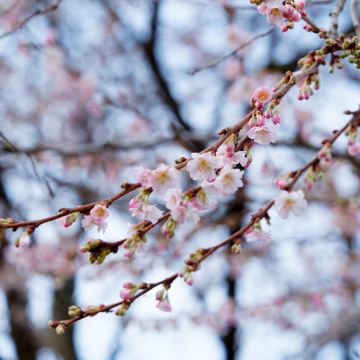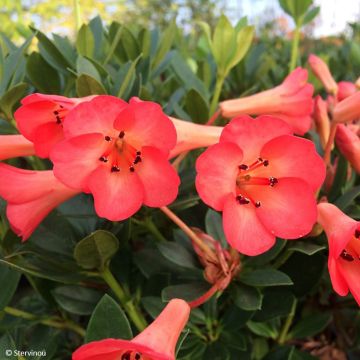

Parrotiopsis jacquemontiana


Parrotiopsis jacquemontiana - Parrotie de Jacquemont


Parrotiopsis jacquemontiana


Parrotiopsis jacquemontiana


Parrotiopsis jacquemontiana
Parrotiopsis jacquemontiana
Parrotiopsis jacquemontiana
Jacquemont’s Parrotiopsis
Special offer!
Receive a €20 voucher for any order over €90 (excluding delivery costs, credit notes, and plastic-free options)!
1- Add your favorite plants to your cart.
2- Once you have reached €90, confirm your order (you can even choose the delivery date!).
3- As soon as your order is shipped, you will receive an email containing your voucher code, valid for 3 months (90 days).
Your voucher is unique and can only be used once, for any order with a minimum value of €20, excluding delivery costs.
Can be combined with other current offers, non-divisible and non-refundable.
Why not try an alternative variety in stock?
View all →This plant carries a 24 months recovery warranty
More information
We guarantee the quality of our plants for a full growing cycle, and will replace at our expense any plant that fails to recover under normal climatic and planting conditions.
Would this plant suit my garden?
Set up your Plantfit profile →
Description
The Parrotiopsis jacquemontiana is a deciduous bush, closely related to witch hazels, that deserves to be discovered and more frequently planted in our gardens. It is interesting for its early spring flowering, reminiscent of Cornus kousa, for its beautiful open habit, and superb autumn colors. The flowering sometimes begins as early as March, blooming in the form of yellow stamen balls surrounded by beautiful white bracts. Easy to grow in moist soil, preferably acid to neutral, it withstands cold very well. This plant truly brightens up the late season and marks the end of the dreary winter days. Plant it alongside other early flowering shrubs, in full sun or partial shade.
The Parrotiopsis jacquemontiana, sometimes called Jacquemont's parrotie, is native to a vast region ranging from Afghanistan to the northwest Himalayas, where it grows in light undergrowth, at altitudes between 1500 and 2100 m (4921 and 6890ft). This plant belongs to the family Hamamelidaceae, which also includes Loropetalum, Liquidambar, and Persian parrotie, all of which invariably have foliage with fantastic colors. Parrotiopsis jacquemontiana slowly forms a large, vigorous bush, with an upright habit during its youth, gradually spreading over time. It reaches a height of about 6m (20ft) with a spread of 4m (13ft) at maturity. Its deciduous foliage is composed of alternate, pendulous, rounded, dentate leaves, pubescent on the underside, measuring 5 to 8 cm (2 to 3in) in length. They are initially yellowish-green in spring, turn green in summer, and then color themselves in autumn with coppery-orange, yellow, sometimes tinged with crimson and scarlet depending on the soil, filling the garden with warm hues. Its surprising spring flowers are just as delightful as its colorful foliage. They abundantly appear on the branches in March-April, at the same time as the young leaves unfold. Each inflorescence, 5 cm (2in) wide, is composed of numerous apetalous flowers with yellow stamens, gathered in a round head surrounded by 4 to 6 papyraceous bracts, strongly veined, and white in color. The flowering is followed by the formation of a small fruit called a capsule, 6 mm (1in) long, opening at maturity into 4 chambers, each containing only one seed.
Parrotiopsis jacquemontiana likes fresh, humus-rich soils, low in limestone, and not too heavy. It will thrive in full sun or partial shade. Plant it at the edge of woodland, under large deciduous trees with airy foliage or in the back of a border along with Heuchera, Daphne, and Sarcococca. It will also look magnificent in a mixed border, combined with evergreen shrubs such as autumn camellia, Fothergilla gardenii, or Chimonanthus praecox. At its base, you can plant winter heathers or hellebores, for example.
Report an error about the product description
Parrotiopsis jacquemontiana in pictures




Plant habit
Flowering
Foliage
Botanical data
Parrotiopsis
jacquemontiana
Hamamelidaceae
Jacquemont’s Parrotiopsis
Himalayas
Other Shrubs A to Z
View all →Planting and care
To fully appreciate the beauty of your Parrotiopsis jacquemontiana, plant it near your house so that it stands out against a dark background of evergreen foliage. A partially shaded exposure is preferred over scorching sunlight. Being sensitive to limestone, it should be cultivated in acid soil enriched with compost, or at the very least in neutral soil with very little limestone, enriched with leaf compost. To facilitate its establishment, incorporate acid soil during planting. The soil should remain moist, even in summer. Mulching around the base of the plant will help maintain its freshness. A sufficiently deep and humus-rich soil, even on limestone subsoil, should not hinder the growth of this bush.
Planting period
Intended location
Care
This item has not been reviewed yet - be the first to leave a review about it.
Similar products
Haven't found what you were looking for?
Hardiness is the lowest winter temperature a plant can endure without suffering serious damage or even dying. However, hardiness is affected by location (a sheltered area, such as a patio), protection (winter cover) and soil type (hardiness is improved by well-drained soil).

Photo Sharing Terms & Conditions
In order to encourage gardeners to interact and share their experiences, Promesse de fleurs offers various media enabling content to be uploaded onto its Site - in particular via the ‘Photo sharing’ module.
The User agrees to refrain from:
- Posting any content that is illegal, prejudicial, insulting, racist, inciteful to hatred, revisionist, contrary to public decency, that infringes on privacy or on the privacy rights of third parties, in particular the publicity rights of persons and goods, intellectual property rights, or the right to privacy.
- Submitting content on behalf of a third party;
- Impersonate the identity of a third party and/or publish any personal information about a third party;
In general, the User undertakes to refrain from any unethical behaviour.
All Content (in particular text, comments, files, images, photos, videos, creative works, etc.), which may be subject to property or intellectual property rights, image or other private rights, shall remain the property of the User, subject to the limited rights granted by the terms of the licence granted by Promesse de fleurs as stated below. Users are at liberty to publish or not to publish such Content on the Site, notably via the ‘Photo Sharing’ facility, and accept that this Content shall be made public and freely accessible, notably on the Internet.
Users further acknowledge, undertake to have ,and guarantee that they hold all necessary rights and permissions to publish such material on the Site, in particular with regard to the legislation in force pertaining to any privacy, property, intellectual property, image, or contractual rights, or rights of any other nature. By publishing such Content on the Site, Users acknowledge accepting full liability as publishers of the Content within the meaning of the law, and grant Promesse de fleurs, free of charge, an inclusive, worldwide licence for the said Content for the entire duration of its publication, including all reproduction, representation, up/downloading, displaying, performing, transmission, and storage rights.
Users also grant permission for their name to be linked to the Content and accept that this link may not always be made available.
By engaging in posting material, Users consent to their Content becoming automatically accessible on the Internet, in particular on other sites and/or blogs and/or web pages of the Promesse de fleurs site, including in particular social pages and the Promesse de fleurs catalogue.
Users may secure the removal of entrusted content free of charge by issuing a simple request via our contact form.
The flowering period indicated on our website applies to countries and regions located in USDA zone 8 (France, the United Kingdom, Ireland, the Netherlands, etc.)
It will vary according to where you live:
- In zones 9 to 10 (Italy, Spain, Greece, etc.), flowering will occur about 2 to 4 weeks earlier.
- In zones 6 to 7 (Germany, Poland, Slovenia, and lower mountainous regions), flowering will be delayed by 2 to 3 weeks.
- In zone 5 (Central Europe, Scandinavia), blooming will be delayed by 3 to 5 weeks.
In temperate climates, pruning of spring-flowering shrubs (forsythia, spireas, etc.) should be done just after flowering.
Pruning of summer-flowering shrubs (Indian Lilac, Perovskia, etc.) can be done in winter or spring.
In cold regions as well as with frost-sensitive plants, avoid pruning too early when severe frosts may still occur.
The planting period indicated on our website applies to countries and regions located in USDA zone 8 (France, United Kingdom, Ireland, Netherlands).
It will vary according to where you live:
- In Mediterranean zones (Marseille, Madrid, Milan, etc.), autumn and winter are the best planting periods.
- In continental zones (Strasbourg, Munich, Vienna, etc.), delay planting by 2 to 3 weeks in spring and bring it forward by 2 to 4 weeks in autumn.
- In mountainous regions (the Alps, Pyrenees, Carpathians, etc.), it is best to plant in late spring (May-June) or late summer (August-September).
The harvesting period indicated on our website applies to countries and regions in USDA zone 8 (France, England, Ireland, the Netherlands).
In colder areas (Scandinavia, Poland, Austria...) fruit and vegetable harvests are likely to be delayed by 3-4 weeks.
In warmer areas (Italy, Spain, Greece, etc.), harvesting will probably take place earlier, depending on weather conditions.
The sowing periods indicated on our website apply to countries and regions within USDA Zone 8 (France, UK, Ireland, Netherlands).
In colder areas (Scandinavia, Poland, Austria...), delay any outdoor sowing by 3-4 weeks, or sow under glass.
In warmer climes (Italy, Spain, Greece, etc.), bring outdoor sowing forward by a few weeks.























































